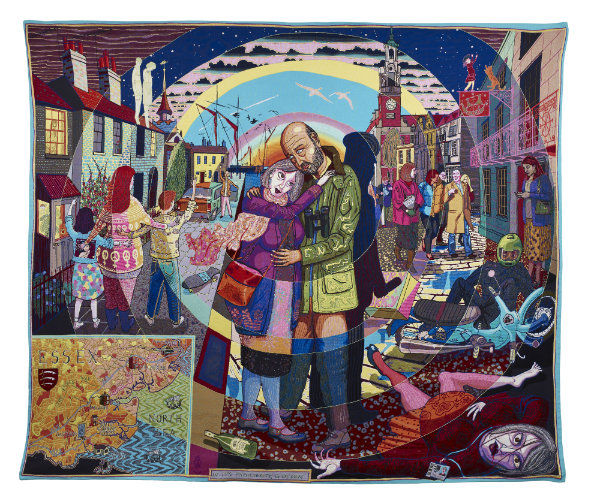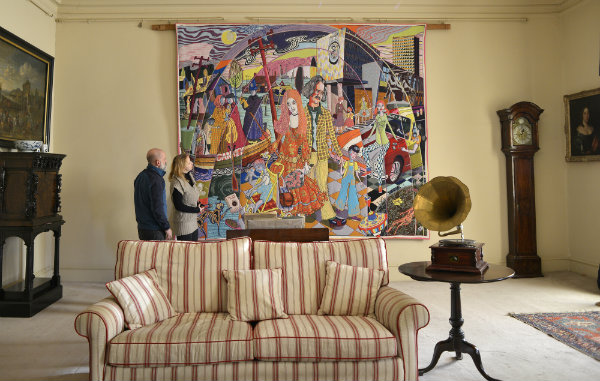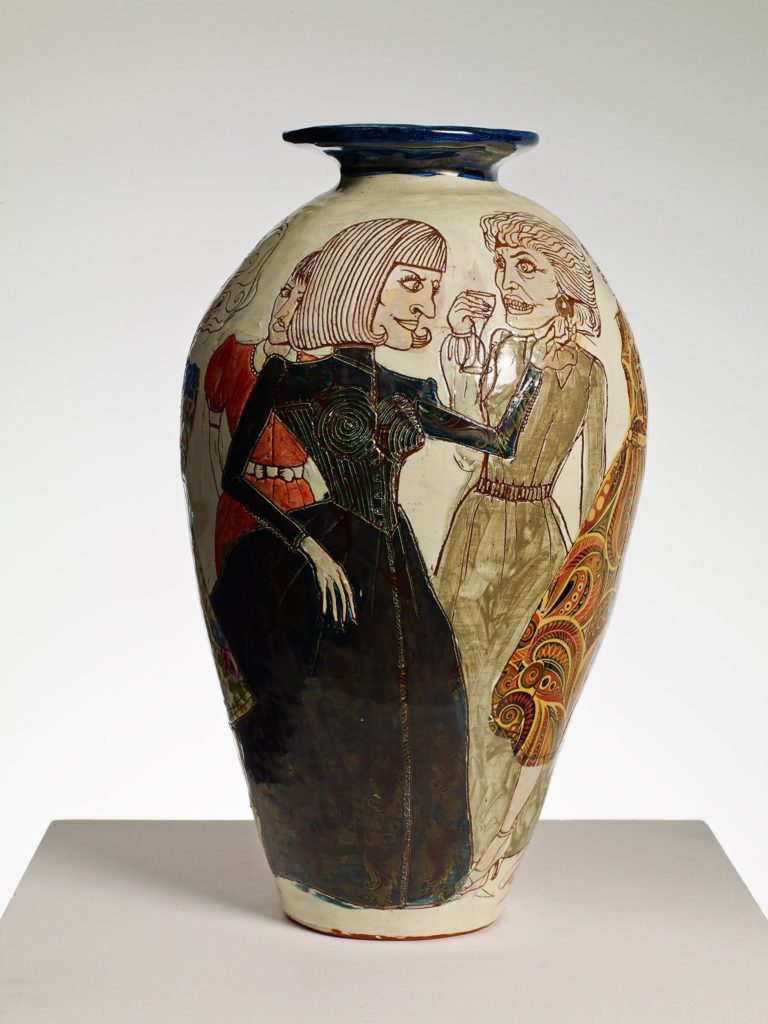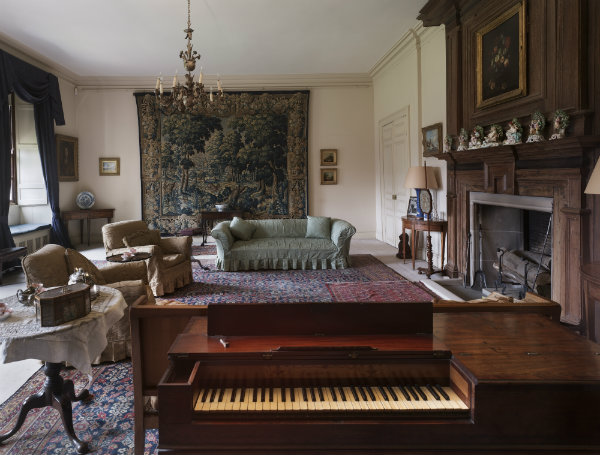
TURNER Prize winner Grayson Perry launches Grayson’s Art Club, his pledge to “battle the boredom” of the Coronavirus lockdown through art, on Channel 4 tonight.
The Essex transvestite artist, potter, broadcaster and writer will be taking viewers on a journey of artistic discovery in a six-part series of themed shows designed to encourage you to make your own work in the new normal of isolation.
This was the year when Perry’s “lost pots” should have been the centre of attention in York from June 12 to September 20 in the Grayson Perry: The Pre-Therapy Years exhibition at York Art Gallery.
Watch this space for any update on what may yet happen. In the meantime, York Museums Trust is in discussion with its partners for The Pre-Therapy Years, an exhibition that is scheduled to move on to other venues.
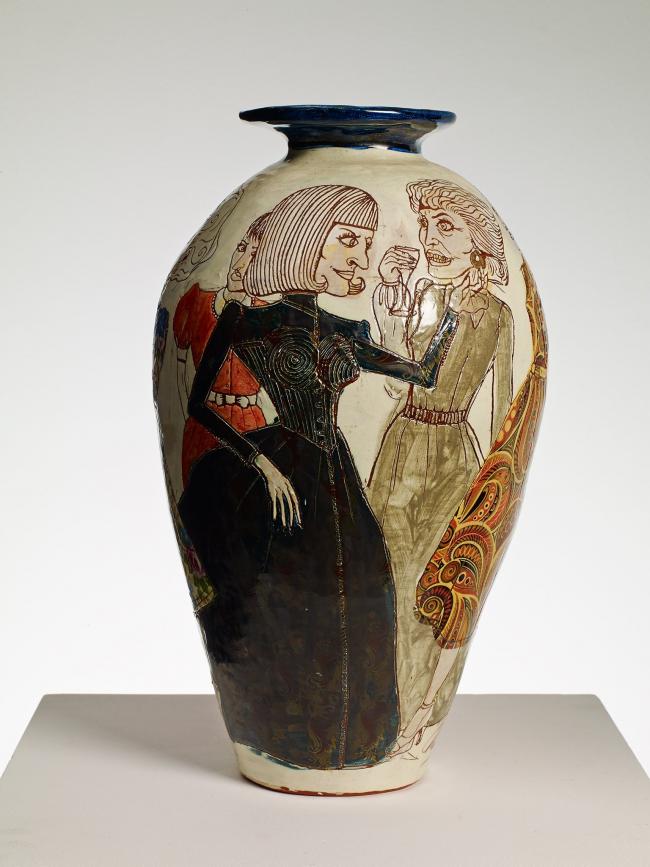
Back to Grayson’s Art Club. Through the magic of video call, in tonight’s first episode broadcast from his London workshop at 8pm, 60-year-old Perry will address the theme of Portrait with large-scale figurative painter Chantal Joffe and comedian and campaigning presenter Joe Lycett, who has taken to trying his hand at portraiture during lockdown.
For episode two, focusing on animal art, Grayson’s online guests will be British painter and sculptor Maggi Hambling and comedian and TV show host Harry Hill.
Ampleforth College alumnus and Angel Of The North sculptor Antony Gormley and comedian and comedy actor Jessica Hynes will pop up in episode three.
Episode four will feature artist Tacita Dean and comedian cum surrealist artist Vic Reeves, aka Jim Moir, creator and curator of the £500,000 Vic Reeves’ Wonderland for the 2012 Illuminating York festival of light and sound.

Further guests will be announced later for an interactive series that will climax with an exhibition of works made by both the public and Perry’s celebrity guests as a “chronicle of Britain’s mood and creativity in isolation”.
Whenever it does run in York, Grayson Perry: The Pre-Therapy Years comprises his earliest works and “lost pots”, including 70 ceramics crowd-sourced after a national public appeal.
Presented in York Art Gallery’s Centre of Ceramic Art (CoCA), this exhibition will be the first time these lost Perry creations have been assembled for display together, a cause for celebration for the Royal Academician Grayson.
“This show has been such a joy to put together, I am really looking forward to seeing these early works again, many of which I have not seen since the Eighties,” he says.

“It is as near as I will ever get to meeting myself as a young man; an angrier, priapic me with huge energy but a much smaller wardrobe.”
CoCA first exhibited a Grayson Perry ceramic, Melanie, in July 2015 as its centrepiece talking point after York Art Gallery’s £8 million transformation.
Melanie is one of three women from his Three Graces work, joined by Georgina and Sarah in the Miss Plus Size Competition.
“First seen in Grayson’s Who Are You? documentary, Melanie is a voluptuous figurative piece with a strong narrative that discusses the changing view of what constitutes feminine beauty,” said York Museums Trust’s curator of ceramics, Dr Helen Walsh, at the time.
Perry commented on his Three Graces: “In the history of sculpture, female forms such as these were often seen as fertility goddesses to be prayed to for children and plentiful harvests. Nowadays, we are more likely to see a growing health problem.”

In May 2014, accompanied by his childhood teddy bear Alan Measles, Perry opened the Meet The Museums Bears special event in the York Museum Gardens in full transvestite regalia as part of York Museums Trust’s contribution to the Connect 10 Museums At Night national celebration.
Earlier this year, from February 8, Perry’s Stitching The Past Together tapestries went on show at Nunnington Hall, near Helmsley.
Out went the National Trust country house’s 17th century Verdure tapestries for conservation work; in came a pair of Grayson’s typically colourful and thought-provoking Essex House Tapestries: The Life Of Julie Cope (2015).
Hanging in an historic setting for the first time, in the Nunnington Hall drawing room, this brace of large-scale, striking works tells the story of Julie Cope, a fictitious Essex “everywoman” created by the irreverent Chelmsford-born 2003 Turner Prize winner.


